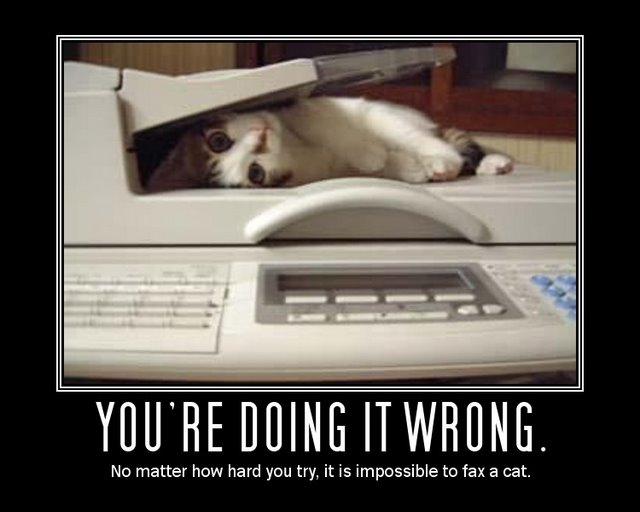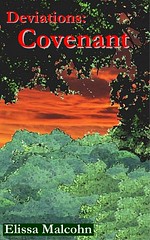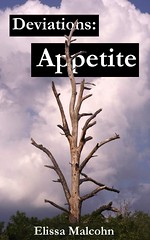A Bunch of Fertilizer

Deformed cotyledons. Image courtesy of l'institut national de la recherche agronomique.
My current Facebook status line reads, "I've got seedy brain. Been plopping out story ideas & scribbling notes. They're like cotyledons all bursting through the soil at once, trying to strangle each other for supremacy."
On balance, this is a good thing. My imagination's nice and fertile, like healthy loam.
It also means those seedlings will probably have to be thinned.
For every story I produce, I've got multiple failures. But, continuing the gardening metaphor, those little deaths return nutrients to the soil, ultimately adding to its fertility.
The current onslaught of ideas has already produced one probable death. The story's got a good start. I've got a tight little theme to work with. And therein lies the problem: Conveying that theme started sending me too far afield in the story arc, until it became Rube Goldbergian.

One of Rube Goldberg's inventions, courtesy of Brian Cronin's "Comic Book Legends Revealed."
This type of problem involves more than just going off on tangents. It means the believability of Element A relies on complex machinations of Element B, which itself relies on complex machinations of Element C, and so on. It means I've gotten lost, effectively burying the theme beneath a load of crap.
Sometimes, when I face this kind of problem, I pare the story down to its nub and start over. In this case, I came up with a different plot in a different genre that I believe does a better job of conveying the same idea. Why? For one thing, I can use certain genre motifs to simplify my delivery. Those motifs provide a built-in scaffolding on which to build the story. It seems to be working much better so far; but to paraphrase Yogi Berra, the story ain't over till it's over.
A different idea hit me this morning, generating a full outline. The outline has a pleasing circularity to it. The story will require a fair amount of world-building, which in turn will require some research to make the details believable. It's got good potential for character development. Time and mental elbow grease will tell me if it's as workable as the outline makes it look.
I'm also toying with an idea to fit a particular market theme. That one's in the research phase.
My story garden's got a fair number of half-developed works. They're hardy plants despite their stunted growth. One has a theme that's become choked in weeds. The idea seed is still there, but I've got to find a different growth medium for it. Another has its potential still curled up inside a hard casing that I've been trying to open for years.
If I like the idea enough, I keep banging my head against a wall as the urge hits me because I want so badly to make it work. I stubbornly persist, trying one angle and then another, hoping I'll find the magic additive that makes everything bloom.

Image courtesy of Village of Joy.
Natalie Goldberg calls this process "composting" in her book Writing Down the Bones. She wrote, "Often I will stab many times at something I want to say. For instance, you can look in my notebooks from August through December 1983 and see that I attempted several times a month to write about my father dying. I was exploring and composting the material. Then suddenly, and I can’t say how, in December I sat transfixed at the Croissant Express in Minneapolis and a long poem about that subject poured out of me. All the disparate things I had to say were suddenly fused with energy and unity – a bright red tulip shot out of the compost. Katagiri Roshi said: 'Your little will can’t do anything. It takes Great Determination. Great Determination doesn’t mean just you making an effort. It means the whole universe is behind you and with you – the birds, trees, sky, moon, and ten directions.' Suddenly, after much composting, you are in alignment with the stars or the moment or the dining-room chandelier above your head, and your body opens and speaks."
I've got heaps of compost in my computer. For every story I attempt, I ask myself:
1. Why do I care?
Something fired me up and made me feel all sparkly. A story idea starts out as a new toy. Inside, my primate brain jumps up and down and goes Ooh ooh ooh. But that alone doesn't create a story. That's the idea seed plopping into the dirt, still curled up in its shell.
2. Can I build a structure on this?
This gets back to story basics. Can this idea play out into something with a beginning, a middle, and an end? Can it sustain a progression? In my gardening metaphor I have to ask myself if I have enough nutrients to grow this thing. If I don't have them, where can I find them? Or am I just looking at something that will remain pretty but inert, no matter what I throw at it?

The opposite of Rube Goldberg. Image courtesy of Village of Joy.
3. What characters will grow this idea to maturity?
Sometimes characters are the starting point for a story. Sometimes I'm toying with a concept and need to develop the characters to carry it. In both cases, those characters have to come to life. They need motivation. They need conflict. They are the storm that dumps life-giving rain on the story seedling, sometimes at the risk of drowning it. They bring me to the next question:
4. Am I emotionally ready for this?
I get emotionally involved when I write. I have to feel what my characters feel, which involves a delicate balance. When I do it right, they come to life. When I do it wrong, my own internal catharsis drowns them out. My closeness to the story can make it difficult for me to tell the difference, which is where the deep freeze comes in. If the story remains cohesive after I've left it alone for a while, chances are I've done it right, at least for me. Either that or I have to resolve my own issues before I can hope to resolve my characters' issues. As involved as I get, I also need detachment. Sometimes an idea drops its story facade and reveals its true identity as unmitigated navel-gazing.
5. What tone do I want to convey?
Some plants, like aloe, prefer alkaline soil. Others, like azaleas, prefer acidic soil. And like a garden landscape, a storyscape contains different substrates. What tone best furthers the drama? Do I want my scene alkaline or acidic, to what degree, and how best do I amend the narrative soil?
6. What's my layout?
Plant corn south of peppers (in the northern hemisphere) and the peppers will languish in the corn's shade. Does a scene need more development, or should I lop it off at the top? How do I best order the information I want to convey? Or, borrowing from the Watergate era, what do my characters know and when do they know it?
7. Am I in the proper growing zone?
The year I moved from Massachusetts to Florida, I planted tomatoes in March and felt something akin to pure decadence. Back in Massachusetts the ground was still hard under snow and ice. Attempting outdoor crops was out of the question because they'd just die. I've gotten ideas I'd love to plant, but I just don't have the climate for them. I don't have enough of a background to develop the concept into a workable story. If my brain continues to itch, I could undertake a course of study that would give me enough of a knowledge base to give the concept full play -- or I could focus on the concept purely as metaphor and as poetry, relying on another skillset. Because if I'm attracted to something that makes my brain hurt, chances are I'm admiring the metaphor of it through my headache, and the metaphor is what I really want to play with.

Image courtesy of Raintree Nursery.
Finally, there is the matter of sustainability, meaning that I can plant only as much as I can reasonably maintain.
I love my ideas. They get me excited. But there are times to plant and not to plant, because I can concentrate on only a few crops at a time. That applies not only to story ideas, but to balancing life in general. Spreading my nutrients too thin gives me sorry-looking, anemic results. My note-scribbling is the equivalent of seed storage. Now that I've generated those ideas, I can place them in a cool, dark place and pull them out when I have the wherewithal to give them sufficient attention. I let them lie dormant and hope they're not attacked by mold.
 |  |
Vol. 2, Deviations: Appetite
Free downloads of both volumes here.
 | Go to Manybooks.net to access Covenant and Appetite in even more formats! |











0 Comments:
Post a Comment
<< Home